Telangana
Telangana is a state famous for its bronze castings, minarets and handicrafts. The state was originally a part of the region of Hyderabad in Andhra Pradesh and is said to be packed with a rich history and heritage.The cultural centers of Telangana, Hyderabad and Warangal, are noted for their wealth and renowned historical structures – Ramappa Temple (UNESCO World Heritage Site), Charminar, Qutb Shahi Tombs, Falaknuma Palace, Chowmahalla Palace, Warangal Fort, Kakatiya Kala Thoranam, Thousand Pillar Temple and the Bhongir Fort.
Golkonda Fort: Situated in the Western part of the beautiful city of Hyderabad at a distance of approximately 9 km from Hussain Sagar Lake, the Golconda fort is spread over an area of three square kilometres which is 4.8 kilometres in length. This mighty fort falls in the list of the most humongous fortresses of India. One interesting phenomenon observed at the Golconda Fort is that if a person standing at a certain point near the dome entrance claps his hands, it can be heard at the hilltop pavilion which lies at a distance of about one kilometre. In a way, this feature proved to be useful as with the help of this, people living inside the fort were warned of any approaching danger if any. Now, this is more or less used as a means of entertainment for the tourists. The architecture, the legends, the history, and the mystery of Golconda Fort add to its allure and make it one of the best historical places in Telangana.
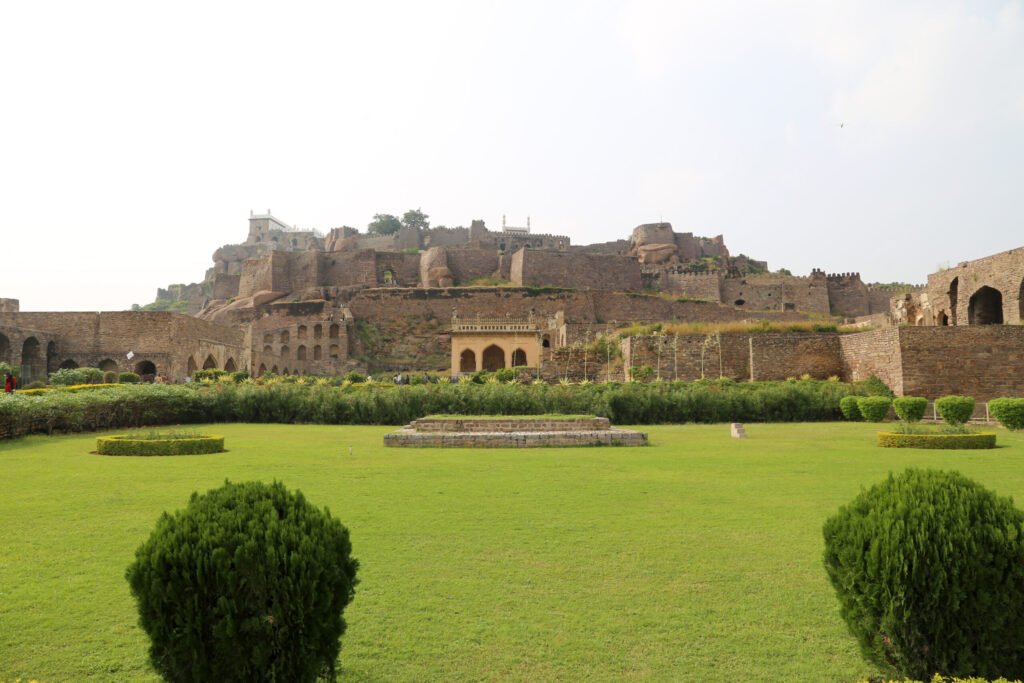
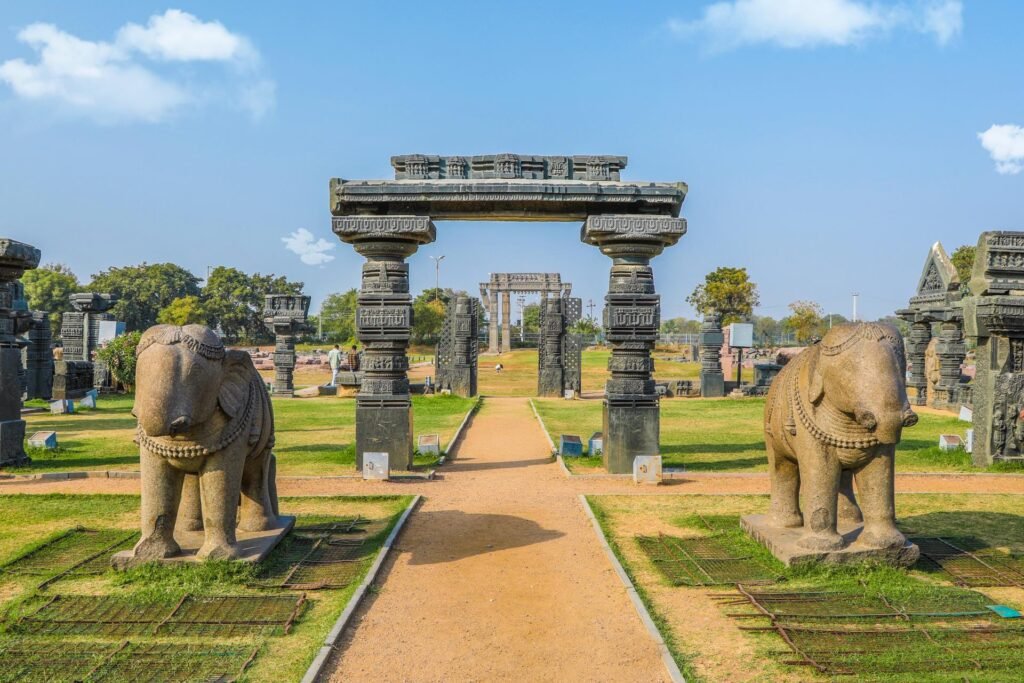
Warangal Fort: A prominent landmark of the Telangana state and an apt example of architectural excellence and historical richness, the Warangal fort is famous historical place in Telangana. The city is also known as Oru Kallu, which means ‘a single stone’. Locals believe the city was built on a single rock in the medieval era. Sprawlingly spread across a stretch of 19 km between Warangal Hanamkonda, this 12th-century fort is a prominent historical attraction in Telangana. Every year thousands of enthusiastic tourists flock in to witness this historical places in Telangana.
Charminar : An identifying feature of the city of Hyderabad, Charminar is the most prominent landmark located right in the heart of the city. This historical place in Telangana was erected by Quli Qutub Shah to signify the founding of Hyderabad. As is evident from the structure, it was so named as it consists of four minarets. Although it lies right in the centre of the city with traffic and crowds milling all about it, Charminar certainly manages to hold the gaze. It is also famous for the market that sprawls around it and is called ‘Laad’ or ‘Chudi’ Bazaar.


Chowmahalla Palace was built in Hyderabad between the years 1857 and 1869. In essence, Chowmahalla can be literally translated to mean ‘Four Palaces’. The magnificent monument consists of two massive courtyards as well as a grand dining hall known as ‘Khilawat’. This splendid monument that once served as the official residence of the Nizams of Hyderabad during their reign still retains some of its past splendour. It is still the property of Barkat Ali Khan Mukarram Jah, heir of the Nizams and has been decorated with UNESCO’s Asia Pacific Merit award in 2010 as well.
Bhuvangiri Fort : A majestic structure that reflects the relics of the 12th century is a Fort of Bhuvanagiri or Bhongir constructed by Tribhuvanamalla Vikramaditya, a Chalukya ruler. Renowned for its impressive architecture and geometric structure, the fort is oval shaped and comprises of two entry points. In fact, the fort is also bastioned with fosse which makes it completely impregnable. Situated to the entrance of the fort is an idol of Sardar Sarvai Panappa, who served as the onetime ruler of this fort as well as the monarch of Goud community.
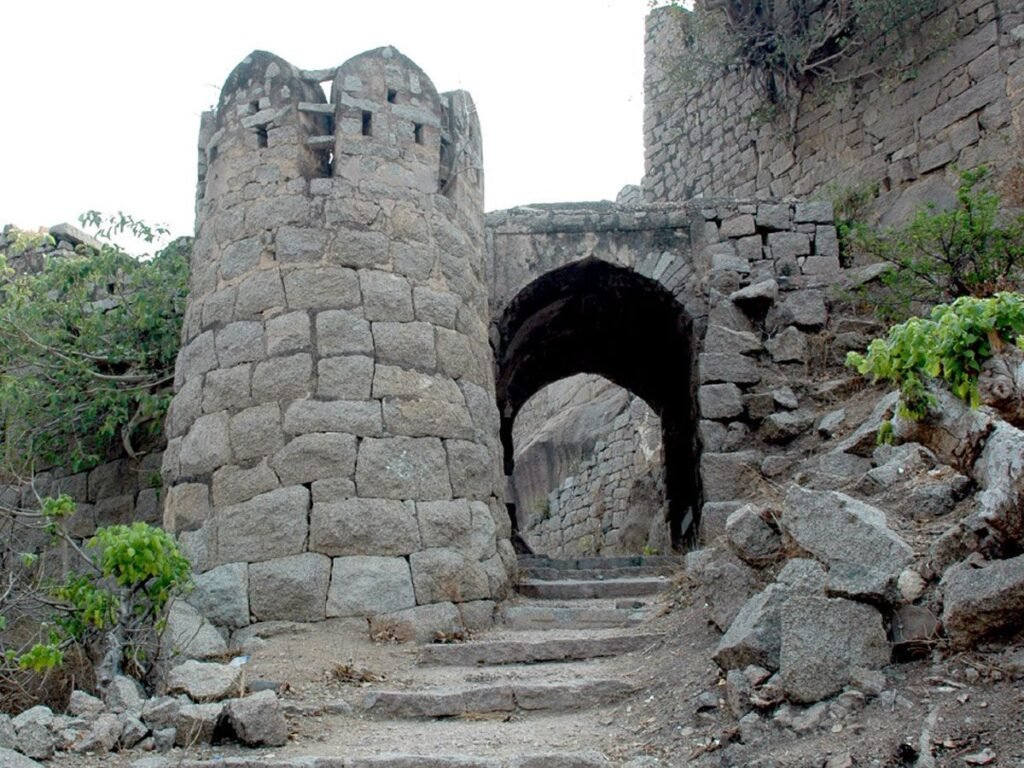

Purani Haveli is an integral part of the heritage and ethos of the city of Hyderabad is Displaying some of the most exquisite forms of craftsmanship, Purani Haveli was a palace was originally built to serve as the home to the Peshwa of Mohammed Quli Qutub Shah, Mir Momen. Today, Purani Haveli is undeniably one of the significant parts of Hyderabad’s golden era and is known for its remarkable exhibits of artwork and talent and functions as a museum. This historic monument in Telangana has one of the most unique features such as a wardrobe, which is the longest in the world!
Nandikonda is nestled along the banks of River Krishna near Nagarjuna Sagar Dam. Vijayapuri Township, the village was once the home to Ikshvaku Dynasty. However, today this village is a site of several important Buddhist excavations and structure such as pillared halls, monasteries etc. that were unearthed during the establishment of the town.


Medak Fort is situated in Telangana, 96 kms from Hyderabad and stands strong as an architectural masterpiece of the bygone era. Currently, the fort is mostly in ruins but it is still an important historical monument of Telangana.
Malwala Palace is an 18th century historical monument located on the Moghalpura, Hyderabad. The ancient structure boasts of Rajput and Mughal architectural styles and has special imported teak wood furniture.


Panagal is another important village in Nalgonda District located just 3 km from the main city and is known for its historic importance. The village in 11th century AD serves as the capital of Kakatiya Dynasty, however today it is famed as a highly religious place. The place owes its fame to once again Kakatiya Dynasty who established numerous temples in the village. Adorned with 66 pillars and a huge Nandi sculpture right in front of central mandapa, there are two most sought after Shiva temples in the village namely the Chaya Someswara Swamy Temple and Pachala Someswara Temple.
Nagarjunakonda Caves Situated at the top of the hill, these caves depict the life of the Buddhist Civilization that existed here centuries ago. From the beautifully carved sculptures, the inscriptions on the cave walls to the life sized statues and relics of Buddha, this cave offers a visual treat for history enthusiasts. Apart from this, there is another cave situated underground and is horizontal in length, it is said to be the second largest cave in the Indian sub-continent. The museum, on the other hand, offers a collection of excavated artefacts belonging to the Buddhism era.
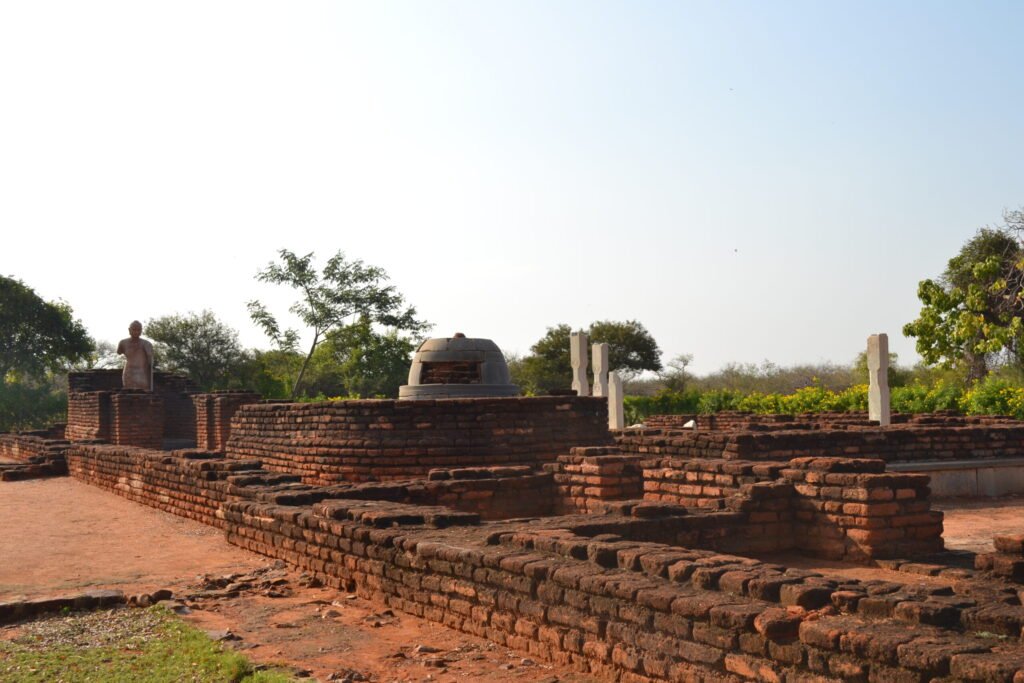
Telangana is a . The state has three seasons:
- Summer: March to June, with warm to hot and dry temperatures, often exceeding 100 °F (38 °C)
- Tropical rains: July to September
- Winter: October to February
Telangana’s yearly temperature is 28.9ºC (84.02ºF), which is 2.93% higher than India’s averages. The state receives about 63.73 millimeters (2.51 inches) of precipitation and has 91.9 rainy days annually. 80% of the rainfall comes from the South-West monsoon, which arrives in June and lasts until September.
Telangana Tourism

HYDERABAD
Hyderabad is home to stately mosques and noisy bazaars lined parallelly alongside swanky new office buildings and malls, and it is these very contrasts – these glimpses into the city’s rich past with inherent promises of an even better future –that make Hyderabad a city worth visiting. Maybe even more than once. The city of pearls and biryani, Hyderabad is home to one of the most iconic landmarks – the Charminar. Translating to ‘four minarets’, the grand edifice is built entirely out of limestone and granite, with four minarets on four sides, each of them facing a different street. The Charminar stands in a labyrinth of lanes crammed with shops, markets, stalls and shoppers – one of the best places to shop for the authentic pearls and relish the tasty biryanis, skewer kebabs and haleem (the smorgasbord of food that Hyderabad is known for).

WARANGAL
Warangal, the historical city of Telangana, is a destination worth visiting. A popular weekend getaway from Hyderabad, Warangal presents a beautiful blend of history, cultural vibrancy, architectural masterpieces and mesmerizing nature. Located around 148 km away from Hyderabad, Warangal city also enjoys a good connectivity to the rest of the country. Warangal tourism also offers tourists with the opportunity to experience refreshing nature and explore rich fauna and flora. Lakes, wildlife sanctuaries and captivating rock formations are sure to attract nature lovers. Boasting of great historical significance and architectural excellence Warangal is indeed a palec not to be missed by a travel enthusiast. Plan a Warangal tour to spend a few days amid the splendor of past and simplistic beauty of nature.
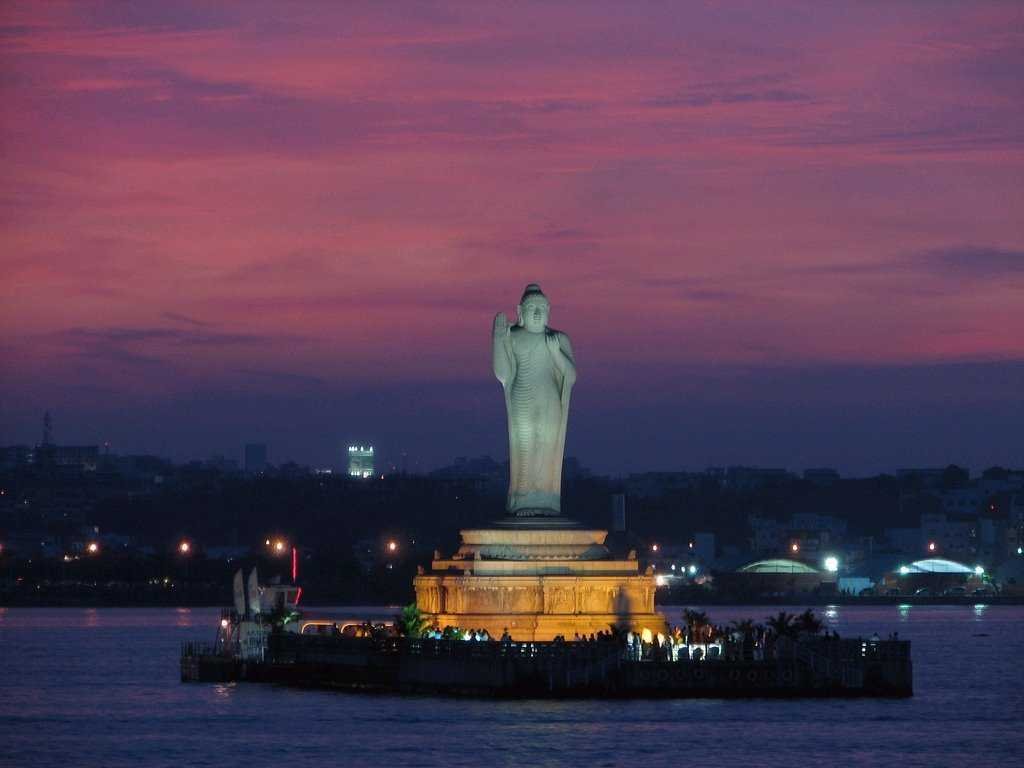
SECUNDERABAD
Secunderabad developed directly under the British rule while Hyderabad was the capital of Nizam’s princely state. This is the reason why there are so many Christian missionary schools in this place. Secunderabad has been named after the III rd Nizam of Asaf Jahi dynasty – Sikandar Jah and was founded as a British cantonment in 1806. It does not come as a surprise then that Secunderabad is one of the largest cantonments in India with base of Army and Air Force. Village Ulwul was renamed as Secunderabad in 1803 by Nizam Sikandar Jah after himself. The Hussain Sagar lake that separates the twin cities is a man-made lake which was constructed in 16th century during the reign of Qutb Shahi dynasty
Plan Your next trip
Recommended Tour Options For Andhra Pradesh

Spiritual Tirupati

Splendid Hyderabad

Vibrant Hyderabad
Telangana Dance Forms
Dappu Nrityam or Dappu Dance is a reputed dance form in the Telangana. Dappu is known by different names in various parts of the state such as Tapetta and Palaka. This dance form derives its name from the melodiously rhythmic musical instrument ‘Dappu’, which is a percussion instrument (drum) shaped like a tambourine. This dance form is believed to have originated from the Nizamabad district of Telangana. The dance performers wear colorful and bright attires. The dance is usually performed at many festive occasions.


Lambadi is an ancient folk dance of Telangana (and Andhra Pradesh), which is performed by the semi-nomadic tribes called ‘Lambadis’ or ‘Banjaras’ or ‘Sengalis’. The dance owes its origin to tribes in Rajasthan. Lambadi dance is usually performed by females and only a rare participation by the males. The dancers were colourful embroidered costumes embellished with glass beads and mirrors and ornate jewellery. The dance involves every-day themes like harvesting, planting and sowing. The dancers use words from Rajasthani, Gujarati, Marathi and Telugu languages. Lambadi is generally a group dance which is performed on various festivals sch as Holi, Dussehra, Deepawali and other such occasions.
Gusadi is a folk dance is performed by ‘Raj Gonds’ or the Gondulu tribes in the of Adilabad district of Telangana. The dance is generally performed during the festival of Diwali. The dancers wear colourful costumes decorated with ornaments and move around in the villages in troupes, singing and dancing. Such troupes are called Dandari dance troupes.

The following is a list of delicious Andhra recipes you cannot miss on your next trip to the regal streets of Hyderabad, tranquil beaches of Vizag, serene Araku Valley or the soul-searching Tirupati temple.
Hyderabadi Biryani has come to be known worldwide as one of India’s jeweled food items. It is of two types; Kachchi gosht ki biryani and Pakki biryani. Marinated meat is cooked in layers of rice in a big handi which is covered with flat dough that eventually rises due to heat; indicating that the biryani is ready to be devoured. With two different cooking methods producing mouthwatering results, the biryani has transformed over the years to satisfy everyone’s taste buds and it even has a vegetarian version.

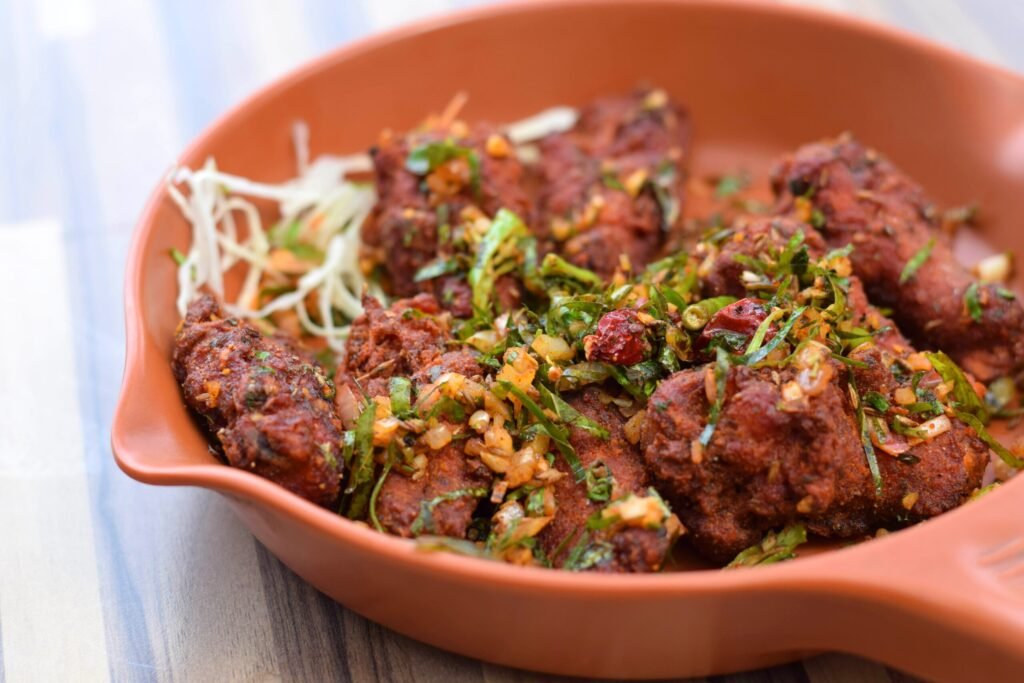
Golichina Mamsam a non-vegetarian dish for the meat-lovers! Golichina roughly translated means “fry” in Telugu. As Telangana cuisine is well-known for its spices, this dish incorporates succulent pieces of mutton into a thick gravy that is loaded with locally grown spices and cooked over low flame for hours so the meat can truly absorb the essence of the curry. It is usually eaten with chapathis, rice or dosa.
Pachi Pulusu
A quick fix for that morning where you’re too sick to cook or you’re craving for Rasam but you are lazy to carry out the entire process of making; Pachi Pulusu will come to your rescue. So the basic difference between Pachi Pulusu and Rasam is that the former has very little “cooking” involved and uses the gas only to temper the seasoning. The commonality is their ingredients. While tamarind requires to be boiled for rasam, it only needs to be soaked in lukewarm water for this dish. The simplicity of the dish sure helps our lazy selves to have wholesome food once in while!


Garijalu
With a crispy exterior, Garijalu also called Kajjikaya has a sweet filling consisting of dry grated coconut, sugar and hints of cardamom. It is deep-fried and its shape as you can see, resembles Karanji; a sweet dish of Maharashtra. The crispy shell is made of maida and rolled out into circles, which is then folded after the filling is stuffed and the shape resembles a half moon. Although the origin of Garijalu is not known and has been shared between different states of India, the people of Telangana have been enjoying making these for generations over the years.
Sakinaluis one of those grubs that Indians have been perfecting over the years in various parts of India and giving it different names like murkku, chakli etc. But Sakinalu is not the same as the aforementioned items although they do share a slightly similar preparation. Its two chief ingredients are rice and sesame seeds and is devoid of spices, therefore making it a mild snack that is also easy to prepare. It is mainly made during the festival of Sankranti or is offered during marriage.
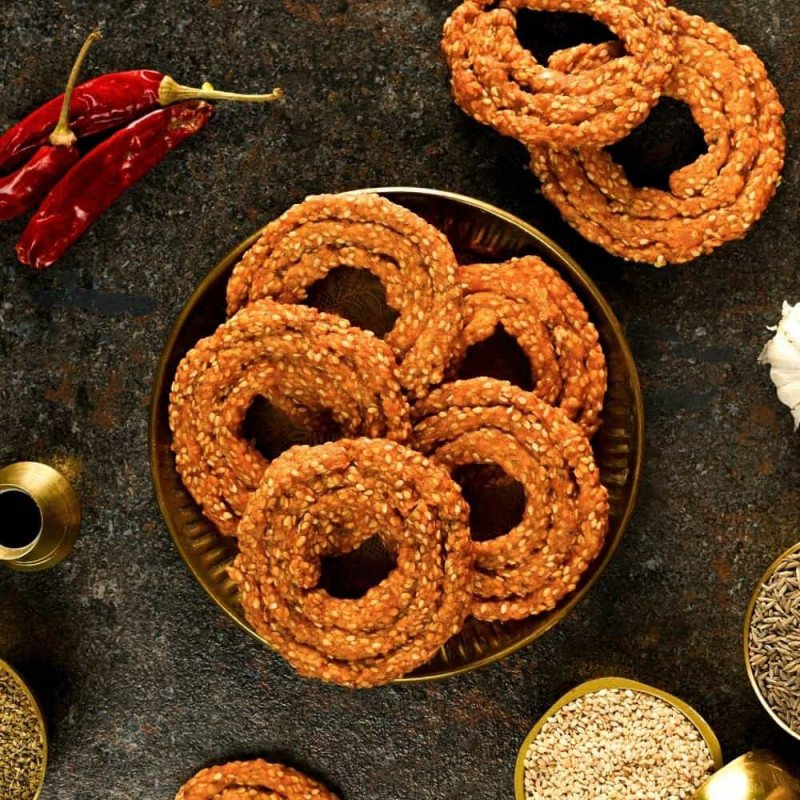

Malidaluis made of chapathi pieces combined with a mix of jaggery, cashews, pista and ghee and shaped into a small balls. Fully packed with nutrients, it is the best solution for anyone craving for a sweet after a meal
Sarva Pindi – Staple Food of Telangana : an excellent choice as it is cooked with at least one component of each stage of the food pyramid. It is a savoury pancake made of rice flour, chana dal, peanuts and chilli. It is cooked in a deep, round shaped pan and to preserve the sanctity of the recipe, it is pertinent to make holes in the rolled out dough mixture before cooking it. It is also called Ginne Appa owing to its preparation.


